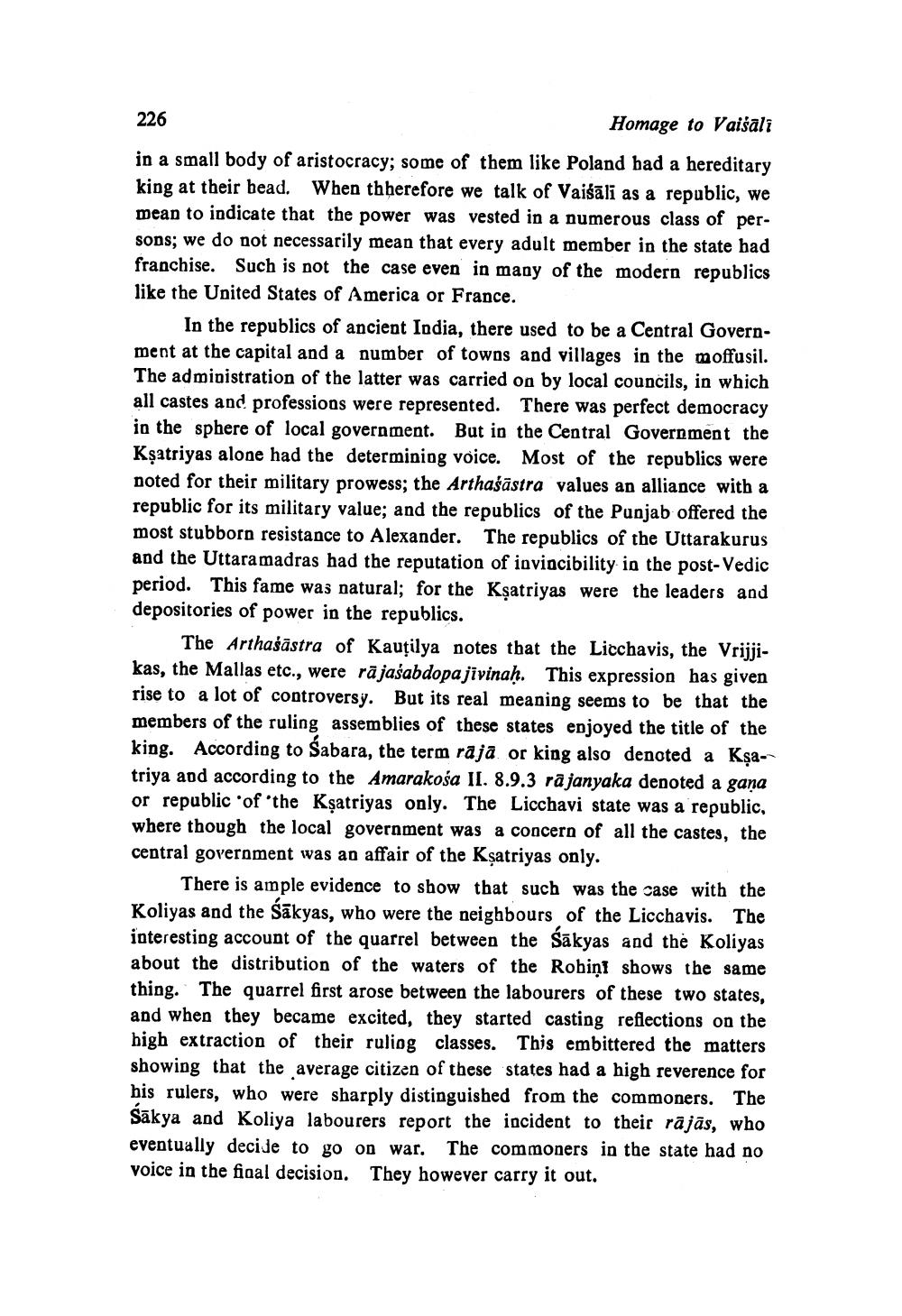________________ 226 Homage to Vaisali in a small body of aristocracy; some of them like Poland bad a hereditary king at their bead. When thherefore we talk of Vaisali as a republic, we mean to indicate that the power was vested in a numerous class of persons; we do not necessarily mean that every adult member in the state had franchise. Such is not the case even in many of the modern republics like the United States of America or France. In the republics of ancient India, there used to be a Central Government at the capital and a number of towns and villages in the moffusil. The administration of the latter was carried on by local councils, in which all castes and professions were represented. There was perfect democracy in the sphere of local government. But in the Central Government the Ksatriyas alone had the determining voice. Most of the republics were noted for their military prowess; the Arthasastra values an alliance with a republic for its military value; and the republics of the Punjab offered the most stubborn resistance to Alexander. The republics of the Uttarakurus and the Uttara madras had the reputation of invincibility in the post-Vedic period. This fame was natural; for the Ksatriyas were the leaders and depositories of power in the republics. The Arthasastra of Kautilya notes that the Licchavis, the Vrijjikas, the Mallas etc., were rajasabdopa jivinah. This expression has given rise to a lot of controversy. But its real meaning seems to be that the members of the ruling assemblies of these states enjoyed the title of the king. According to Sabara, the term raja or king also denoted a Ksatriya and according to the Amarakosa II. 8.9.3 rajanyaka denoted a gana or republic of the Ksatriyas only. The Licchavi state was a republic, where though the local government was a concern of all the castes, the central government was an affair of the Ksatriyas only. There is ample evidence to show that such was the case with the Koliyas and the Sakyas, who were the neighbours of the Licchavis. The interesting account of the quarrel between the Sakyas and the Koliyas about the distribution of the waters of the Robini shows the same thing. The quarrel first arose between the labourers of these two states, and when they became excited, they started casting reflections on the high extraction of their ruling classes. This embittered the matters showing that the average citizen of these states had a high reverence for his rulers, who were sharply distinguished from the commoners. The Sakya and Koliya labourers report the incident to their rajas, who eventually decide to go on war. The commoners in the state had no voice in the final decision. They however carry it out.




